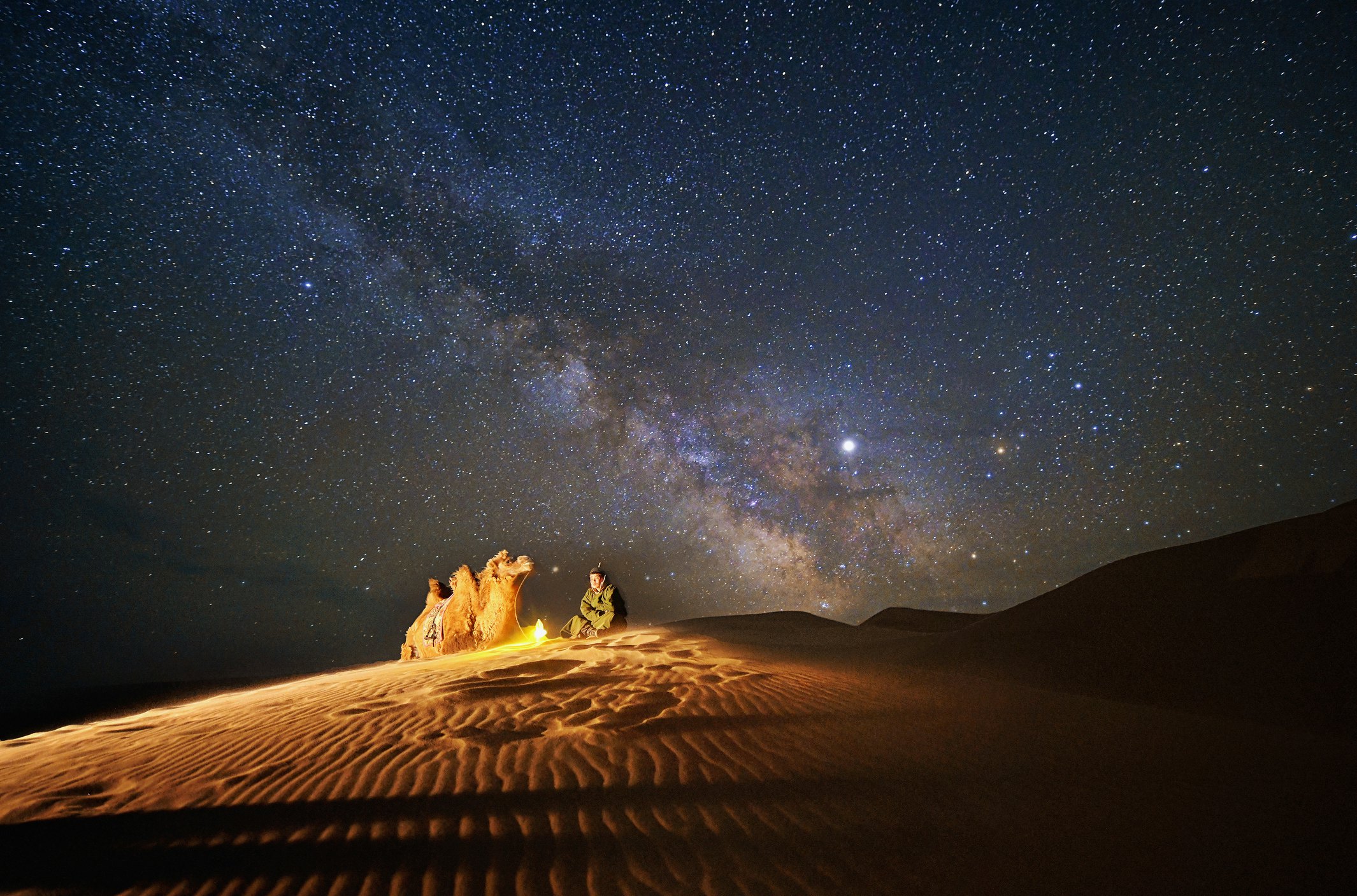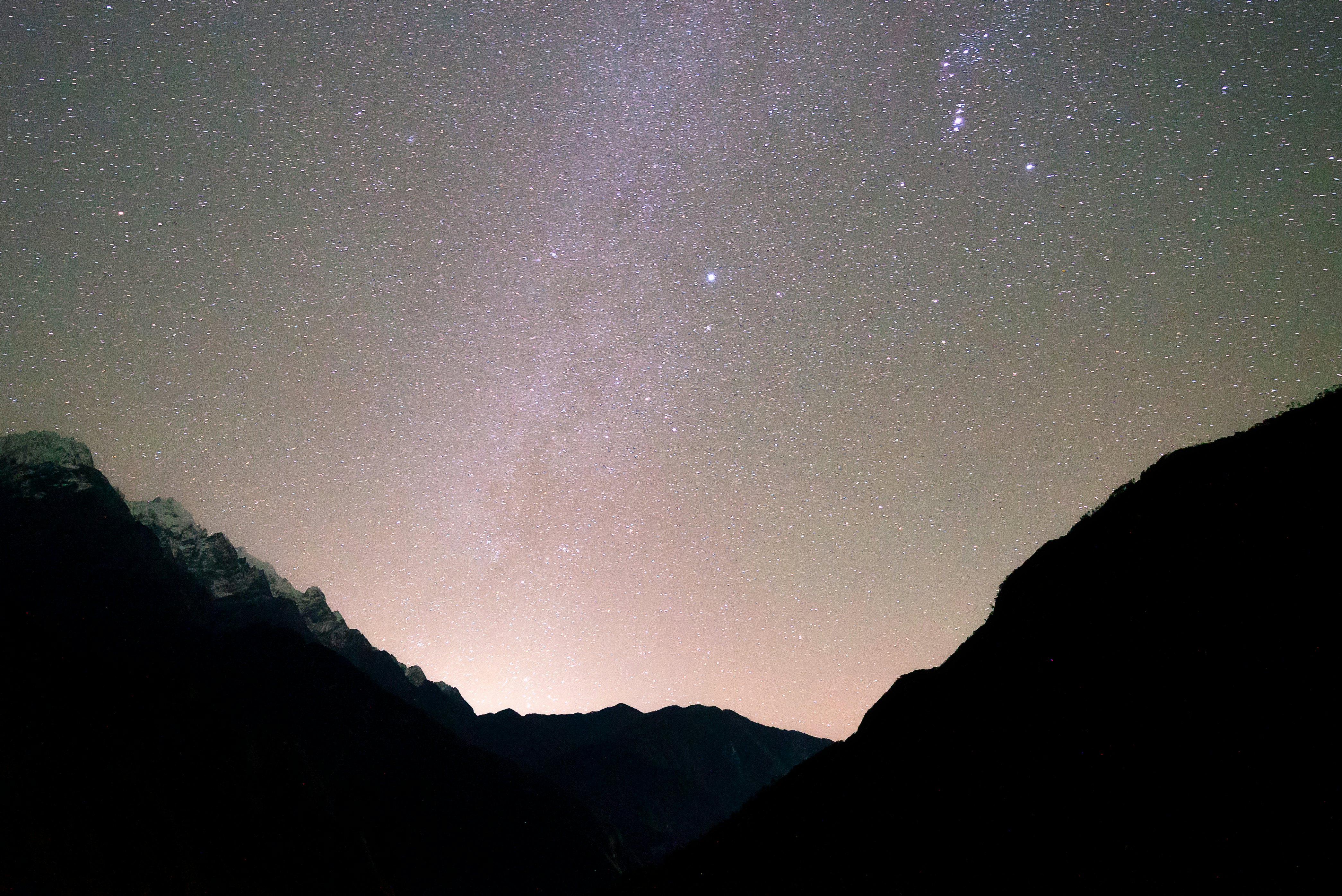
The 30 best countries, cities and regions to visit in 2025

There are stunning stargazing opportunities on Japan's southern islands © Janelle Orth / Alamy Stock Photo
From high-altitude mountains to remote, arid deserts, Asia has all the ingredients – and climate conditions – for an impeccable stargazing trip. But you can’t see the cosmos and Milky Way just anywhere. Densely populated cities like Shanghai and Bangkok sit beneath clouds of light pollution that make catching even one constellation tricky at best. Head to the country, though, and it’s a different, star-speckled story.
In less-populated areas near national parks and mountains, blankets of stars and the shimmering Milky Way illuminate Asia’s most pristine landscapes. Stargazing in Asia is most impressive during peak conditions – the dry season, and during or immediately following a new moon. Summer stargazing is especially dazzling, as the Milky Way’s galactic center shines above the Northern Hemisphere from May through September, but any time of year has the potential for stunning skies.
Ready to catch some cosmos? Here are eight of Asia’s best stargazing destinations.

In 2015, South Korea’s Yeongyang Firefly Eco Park became Asia’s first Dark Sky Park – a coveted certification from the International Dark Sky Association that guarantees low light pollution and ideal stargazing conditions. This dark-sky park is located in the Wangpi River Basin Ecological Landscape Protected Zone in eastern South Korea, about a four hour drive from South Korea’s densely populated capital, Seoul. Yeongyang Ecological Park’s nearby population is small, which means minimal light pollution and crystal-clear skies abound. Beyond stargazing, this park protects the millions of glowing fireflies, who require darkness to communicate with each other.

High elevation and a remote location make the 11,200ft Hehuan Mountain one of the best stargazing destinations in Taiwan. This International Dark Sky Park, the first in Taiwan, is located in Taroko National Park, and is about two hours by car from Taichung International Airport. Travelers can drive or hike up Hehuan Mountain. The government is strict about where travelers can camp – and therefore stargaze – in the area. Several campgrounds such as Heliu campground (at the Lüshui Trail entrance) and Lushui campground near the (Lushui Geological Exhibition Hall) are open to campers.

Built on the most southerly inhabited island in Japan, the Hateruma Island Starry Sky Observatory Tower capitalizes on the dark, clear skies the Yaeyama islands are known for. Observatory visitors can see 84 constellations during peak new-moon periods, including the Southern Cross, a cross-shaped asterism from the Crux constellation. The tower’s refraction telescopes paired with expert stargazing guides make trips both breathtaking and educational. For the ultimate cosmos experience, add a stop at Iriomote Ishigaki National Park, Japan’s first International Dark Sky Park, which is located on the nearby Iriomote Island.

Sure, China’s Great Wall has a reputation for packed crowds, but this world wonder is thousands of miles long – and selfie sticks only fill a tiny portion of it. Older yet accessible stretches of the wall like Gubeikou are open to the public day and night. And, with small crowds, few nearby residents, and low light pollution, this section of the wall has some of the most surreal stargazing in China. Local tour operators like Great Wall Hiking and its sister business the Great Wall Inn (a small B&B a 15-minute walk from the free Gubeikou entrance) team up for stargazing hikes up on this section of wall. For an even more rustic experience, tour operators like Beijing Hikers and Viator offer camping along Gubeikou, too.

Consistently blue skies and a high elevation of over 5000ft above sea level make stars easily visible across Mongolia. But in the remote, otherworldly Gobi Desert, stargazing is entirely next-level. Sand ripples across Asia’s largest desert look more Mars than planet Earth, especially when illuminated by a Milky Way glow. Three Camel Lodge, a National Geographic Unique Lodge of the World, is one of the coziest spots to stargaze in Gobi Desert – especially when the region’s unpredictable desert weather strikes. The lodge hosts travelers in traditional Mongolian gers (similar to yurts); it’s the area’s most convenient base camp for desert stargazing and sand-dune adventures.

At the tail end of the Himalayas, Tiger Leaping Gorge is one of Asia’s best spots for mountain stargazing. This gorge is best experienced via hike; an 11-mile mountain-ringed trail takes travelers up rugged switchbacks and down steep, rocky descents, with Yangtze River views the entire way. Most hikers break the trek into two days, with a night spent at one of several budget-friendly accommodations, like Tiger Leaping Gorge Guesthouse, which has a river-view deck perfect for sunsets and stargazing. The Tiger Leaping Gorge trail is accessible by bus or hired driver; it’s 37 miles north of Lijiang in China’s Yunnan province.

When most travelers visit Vietnam, they cruise or kayak along the maze of Halong Bay’s sky-high islands. But, a bit further out is a lesser-known alternative that’s particularly ideal for stargazing: Lan Ha Bay. Small-boat cruises, like a new wellness offering from Heritage Line, take travelers through Halong Bay and out into calm, clear Lan Ha Bay for two tranquil, star-filled nights. This area, part of Vietnam’s Cat Ba National Park, isn’t just for cruisers. Tourist buses and ferries jet Hanoi travelers to bungalows in the jungles of Cat Ba Island, where they can stargaze in near solitude before dozing off to the rhythm of the waves.

Thailand’s third tallest peak, Doi Chiang Dao, translates to “city of stars” – and rightfully so. It’s one of the darkest spots in the country. Climbing this 7100ft mountain (which requires a hired guide) typically takes two days, which means at least one night above the clouds in northern Thailand’s Daen Lao mountain range. The summit trail is open from late November through early March, with camping – and the best stargazing – near the peak.
Ask LP: when can I travel to Southeast Asia again?
The best US national parks for stargazing, according to star map makers
You’ll have to travel far to get to the world’s best stargazing spot